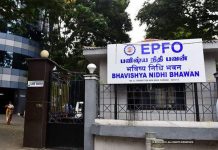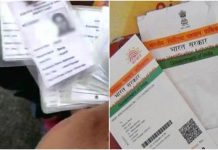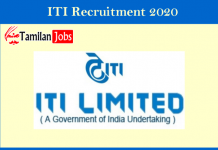
1. What is Encumbrance Certificate?
Encumbrance by definition is an impediment or burden in the form of a legal claim, that a property may carry with it, and which may have a material impact on the value of the property or its transactability. The encumbrance may be in the form of problems in ownership or remaining dues to banks and other financial institutions.
Hence, before taking any significant decision on a property, one is required to obtain an encumbrance certificate, and if there are no encumbrances on the property, then it becomes a ‘Nil Encumbrance Certificate’. The Encumbrance Certificate is important to any party that will be financially involved with the property, including the potential buyers and financial agencies providing loans on or against the property etc.
2. Obtaining Encumbrance Certificate
The Encumbrance Certificate is a document issued by the local sub-registrar’s office, under whose jurisdiction the property lies. The Certificate contains details of sale, gift or any loan transactions relating to the property for a given time period. The time period is selected by the party applying for the Encumbrance Certificate.
Applying for an Encumbrance Certificate generally involves filling Form No. 22, and submitting to the sub-registrar’s office (either online or offline), with the requisite details, including the address and survey number of the property and the time period for which the Encumbrance Certificate is required.
3. Nil Encumbrance Certificate
The Encumbrance Certificate issued by the sub-registrar’s office is either in the form of ‘Form 15’ or ‘Form 16’. Form 16 is the easiest to understand as it states that the property does not have any encumbrances over it, over the time in which the certificate was sought, and hence it’s called the ‘Nil Encumbrance Certificate’.
4. Encumbrance Certificate and its Limitations
If instead the Form 15 is issued, then it will contain the various transactions pertaining to the property like sale/gift/release/registered lease/loan etc. However, the details in the Encumbrance Certificate will only be for the time period, for which it was applied in the first place, and any past transaction details will not be provided. The certificate will also not include any details of the transactions on the property, which are in the process of getting executed, and have not yet been registered with the sub-registrar’s office.
The various transactions executed on the property will appear in the order of the latest transaction on top and the oldest one at the bottom of the form in the Encumbrance Certificate.
If the transaction is a sale type, then the form will mention the buyer a ‘Claimant(C)’ and the seller as ‘Executant (E)’.
If the transaction is a gift deed, then the form will mention the party receiving the property as a gift as ‘Deed Receiver (DR)’ and the party gifting the property as ‘Deed Executer (DE)’.
However, the person obtaining the Encumbrance Certificate must be aware that the Certificate is not always correct in all the facts and statements, and there are occasional clerical errors that creep into the document. The most common errors are those where the name of the buyer or seller is switched, or when the Encumbrance Certificate is issued in another language as compared to the transaction deeds executed earlier, due to which, there arises a possibility of spelling errors in names of persons or places arising due to translation. Other errors include errors in address, survey number, dimensions of the property, width of adjacent road or deed execution date and consideration amount paid etc.
4.1. Rectification deed
Hence, it is advisable to thoroughly examine the Encumbrance Certificate before using it to obtain a loan or sell a property etc. To get the inaccuracies corrected in the Encumbrance Certificate, one needs to apply for the Rectification deed, with any accompanying proofs (if required), that substantiate the claim of the existence of an error in the certificate. However, it must be noted that the Encumbrance Certificate will only carry the details as registered with the local sub-registrar’s office, and the mistakes that can be rectified can only be clerical in nature and not others, and hence any mistakes in original transaction documents, which then lead to display of wrong information in the Encumbrance Certificate, cannot be rectified through the Rectification deed for the Encumbrance Certificate.
One must also be aware that the Encumbrance Certificate is not all encompassing and there are certain transaction details that will not be included in it. As the Certificate only includes details that are registered with the local sub-registrar’s office, any transaction not registered there will not be included in the Encumbrance Certificate. These include equitable mortgage, leasing out of property for a period of less than 1 year, tax liabilities etc.
4.2. Mortgages
The mortgage of a property from the point of view of their registration are classified into two kinds, the first is called the equitable mortgage, where the original title deed documents are deposited with the banks, but the mortgage deed is not registered with the local sub-registrar’s office. The second one is through the registering the memorandum of deposit of title deeds in the local sub-registrar’s office.
The equitable mortgage is the most common method of obtaining loan against a property, but it carries a risk as the transaction is not known to the sub-registrar’s office and hence will not be included in the Encumbrance Certificate. Hence, the original owner of the property can wilfully conceal the loan on property by claiming that he/she has lost the original title deeds. There are also cases of multiple loans against a property, when the owner claims the original title deed to be lost, and obtainsloan on a certified or fabricated copy of title deeds.And in case a buyer ends up buying the property, then he/she will become aware of the liability of the property, only when the Bank(s) reaches out to the buyer for further loan repayment. Hence, in addition to getting an Encumbrance Certificate, one must also insist on the original title deeds while buying a property to eliminate such frauds.
Also, to eliminate the menace arising from the equitable mortgage, over the last decade, the government has amended the Securitisationand Reconstruction of Financial Assets and Enforcement of Security Interest (SARFAESI) Act, such that all Banks and NBFCs are required to file the equitable mortgages issued by them. Through the Amendment made in 2016, the Banks and financial institutions are now required to register the details of even the mortgagesregistered with the registrar. Hence, one may acquire the details of any loan against property, be it equitable mortgage or otherwise,from the Central Registry of Securitisation Asset Reconstruction and Security Interest of India (CERSAI).
4.3. Property Lease
The Encumbrance Certificatealso does not reflect leases of time period shorter than one year, and in case the buyer is unaware of the tenancy arrangements in the property, he/she may have to wait for some time before the lease notice period expires, as mentioned in the rent agreement, and the tenants move out, before legally occupying the property.
4.4. Court Orders on the Property
The Encumbrance Certificate will also not include any orders passed on the property by the courts. However, the local registrar’s office is obliged by the law to update the property records with details of the court proceedings, within three months of the start of the court hearing. The information can be sought from the local registrar’s office by filing an RTI application. The registrar’s office is also required to regularly update the property records with the latest proceedings of the court. However, given the delay between such updations, one may hire a lawyer to get up to date information on the court proceedings.
4.5. Change in Sub-Registrar Jurisdiction
Among other limitations of the Encumbrance Certificate is the rare case where the sub-registrar’s office, under which the property falls, changes over time. And if the change in thesub-registrar’s office has happened within that period for which the Encumbrance Certificate is requested, then it becomes important to get the encumbrance information from both the previous and the current the sub-registrar’s office to get the complete list of transactions for the required duration.
Buyers can also request for an Encumbrance Certificate for a 30 year period instead of 13 year period, which is generally required by most institutions, and further eliminate uncertainty in the flow of title transfer of the property.
4.6. Buying Agricultural Land
Buyer must also be aware that in case of purchasing agricultural land, the change in ownership, as well as change in land use, may not be registered with the local sub-registrar’s office. In such a scenario, it is advisable to get mutation extract and Record of Rights, Tenancy, and Crops (RTC)along with the Encumbrance Certificateto get such details.
Conclusion
Conclusively, the buyer and seller must include suitable indemnity clauses, safeguarding the buyer from legal and financial lien, which occurred before the property was purchased, and safeguarding the seller because of non-performance of the buyer’s responsibilities. However, the seller’s side will also insist to cap the indemnity only up to the legally verifiable best of ability of the seller to keep the property free of any liens. Also, even if the property carries sufficient indemnity clauses, they will be legally enforceable through time taking legal proceedings, and hence it is important for buyers to get property title, debt, and tax repayment history through documents like Encumbrance Certificate. One can also take a lawyer’s help in authenticating that the seller has the original title deed and the title is clear for going ahead with the transaction.






























